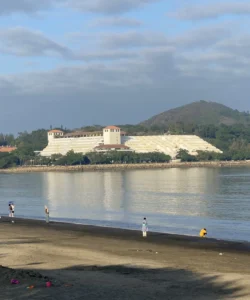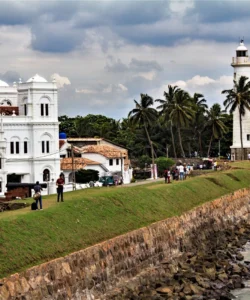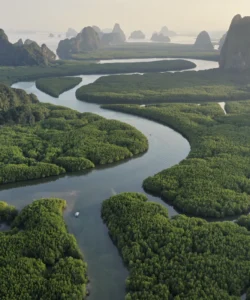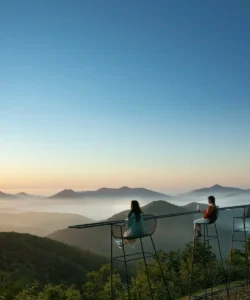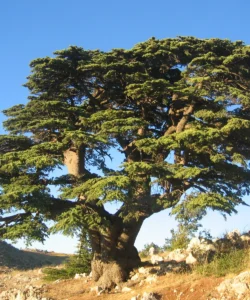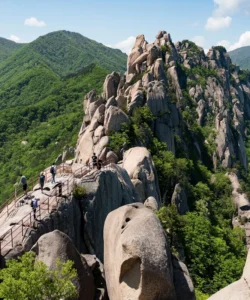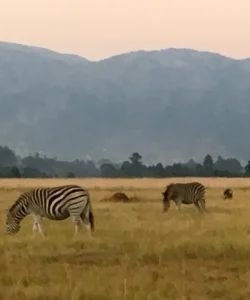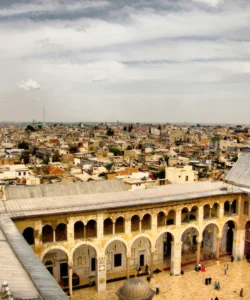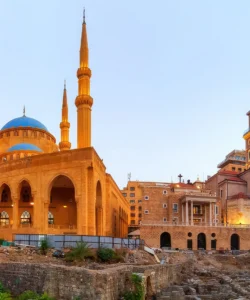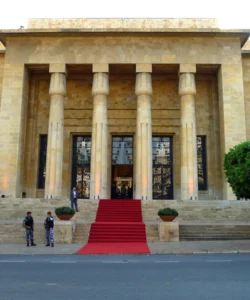The Kadisha Valley (also known as “Wadi Kadisha”) is one of the world’s most significant early Christian monastic settlement sites. Carved by the Kadisha River, its deep gorge and rugged cliffs have provided a secluded and protected refuge for centuries of hermits, monks, and persecuted communities. The name itself, “Kadisha,” means “Holy” in Aramaic, a testament to its profound spiritual heritage.
Listen to an introduction to Kadisha Valley
Name and Address
Name: Kadisha Valley, also referred to as “Ouadi Qadisha” or “The Holy Valley.”
Address: The valley is located in the North Governorate of Lebanon, stretching across the Bsharri and Zgharta Districts. There is no single street address for the entire valley, as it is a natural gorge, but a central point for visitors is the town of Bsharri, which sits at the head of the valley.
How to Get There
The Kadisha Valley is approximately a two-hour drive north of Beirut. The most common methods of travel are:
- By Car: Renting a car or hiring a private taxi is the most flexible option. The drive from Beirut typically follows the coastal highway north before turning inland towards the mountains.
- By Bus: Public buses are available from Beirut to larger towns like Tripoli. From there, you would need to find a minibus or a taxi to Bsharri. This is the most affordable but least direct method.
- Guided Tours: Many tour operators in Beirut offer day trips that include transportation to the Kadisha Valley and the nearby Cedars of God forest.
Landscape and Architecture
The landscape of the Kadisha Valley is dramatic and awe-inspiring, characterized by a deep, sheer-sided gorge.
- Landscape: The valley is carved into the western flank of Mount Lebanon, with steep cliffs rising over 1,000 meters in some places. The Kadisha River flows through the bottom, and the slopes are dotted with dense vegetation and terraced farmland. It is a stunning natural environment that has provided both sustenance and seclusion.
- Architecture: The most prominent architectural features are the ancient monasteries and hermitages built directly into the rock face. These structures, often partially or entirely cut from the limestone cliffs, are a unique form of troglodyte monasticism. Examples include the Monastery of Qannubin, the Monastery of St. Anthony of Qozhaya, and the Monastery of Mar Lichaa.
What Makes it Famous
The Kadisha Valley is renowned for two primary reasons:
- Religious Significance: It has served as a sanctuary for Christian communities, particularly the Maronites, for centuries. The valley’s inaccessibility made it a safe haven from persecution, and its monasteries and hermitages are a living testimony to the ascetic way of life. The valley housed the seat of the Maronite Patriarch for several centuries, solidifying its role as the spiritual heart of the Maronite Church.
- Natural and Cultural Heritage: In 1998, the valley was designated a UNESCO World Heritage Site, jointly with the nearby Cedars of God forest. The designation recognizes its unique cultural landscape, where natural beauty and human history are inseparably linked.
Differences from the Baatara Gorge Waterfall
While both the Kadisha Valley and the Baatara Gorge Waterfall are remarkable natural sites in Lebanon, they are fundamentally different:
- Geological Feature: The Baatara Gorge Waterfall is a single, dramatic geological feature—a sinkhole with three natural bridges where a cascade of water plunges 255 meters. The Kadisha Valley is a vast, long gorge carved by a river, with multiple waterfalls, caves, and cliffs.
- Human History: The Kadisha Valley is defined by its deep human and religious history, with centuries-old monasteries and a history of human settlement. The Baatara Gorge is a purely natural wonder, celebrated for its unique geological formation, with no significant historical settlements or human-built architecture on the scale of the Kadisha Valley.
- Size and Scope: The Baatara Gorge is a specific, single location that can be viewed from a single vantage point. The Kadisha Valley is a sprawling, extensive gorge that requires extensive hiking and exploration to experience fully.
Kadisha Valley Photos:





















